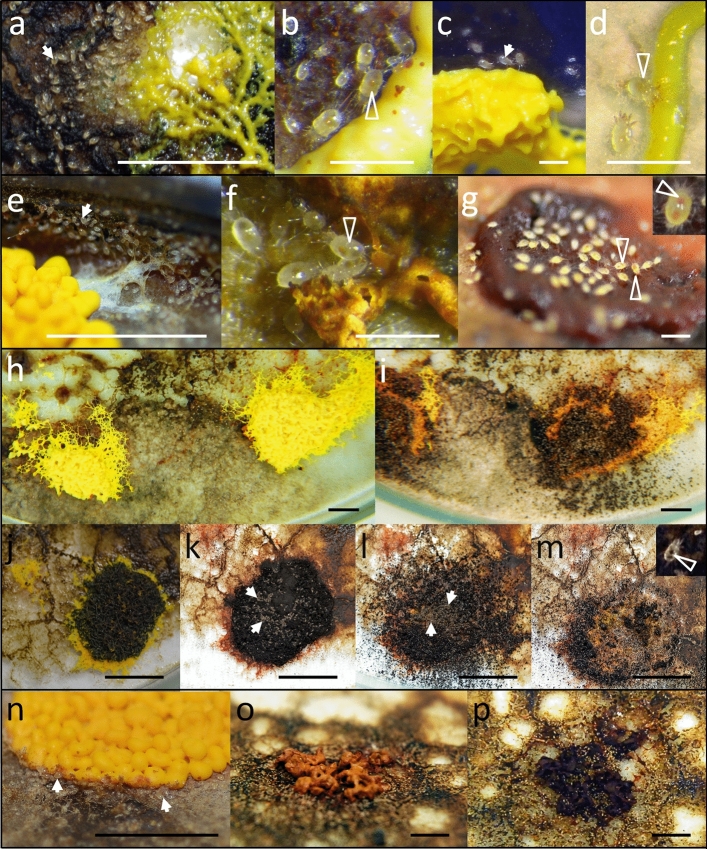Fig. 3.
Tyrophagus putrescentiae (white arrows, when necessary) on various forms of Fuligo septica: on live (a–d) and dead (e–g) plasmodium (e—on the slimy track left by a plasmodium) of F. septica. Subsequent stages of two examples of the F. septica aethalium destruction after 8 days (h, i) and after 10 (k), 13 (l) and 17 (m) days following the onset of observation (j). Tyrophagus putrescentiae on a forming sclerotium of F. septica (n) and example of destruction of F. septica sclerotium within 24 h (o, p). White empty arrowheads indicate mites with their digestive tracts filled with various food items: yellow—live plasmodium (b, d), orange—dead plasmodium (f, g, g-inset), black—spores (m-inset). Scale bars: 0.5 cm (a, e, h–p), 1 mm (b–d, f, g)

